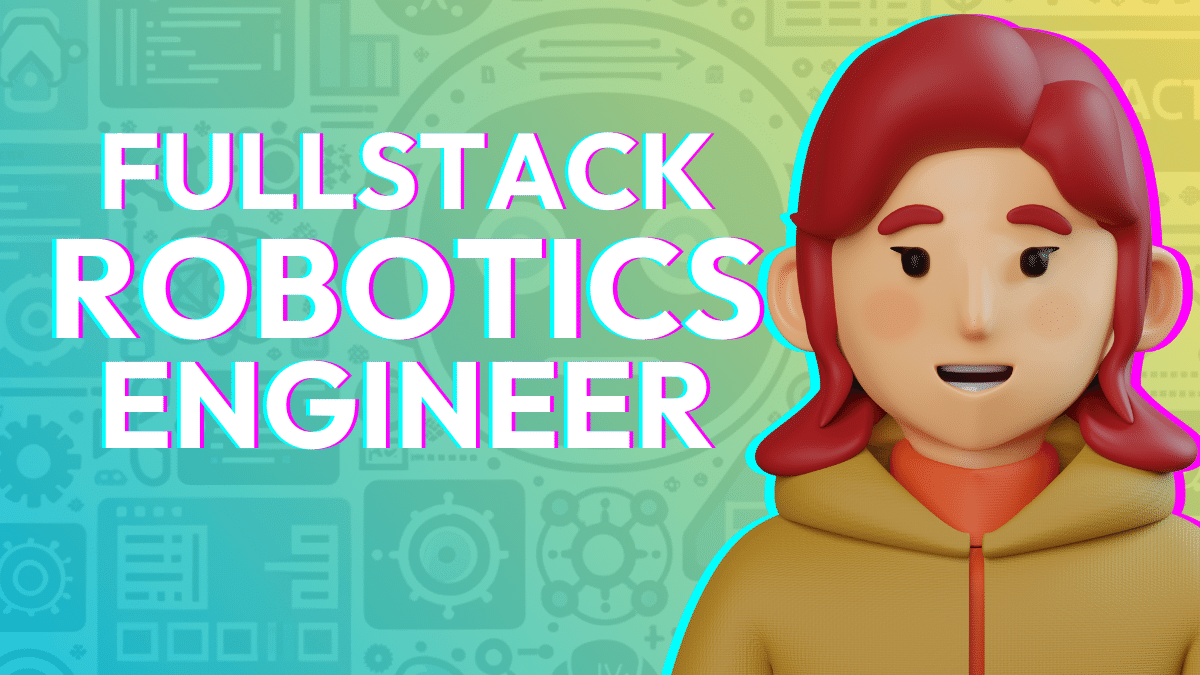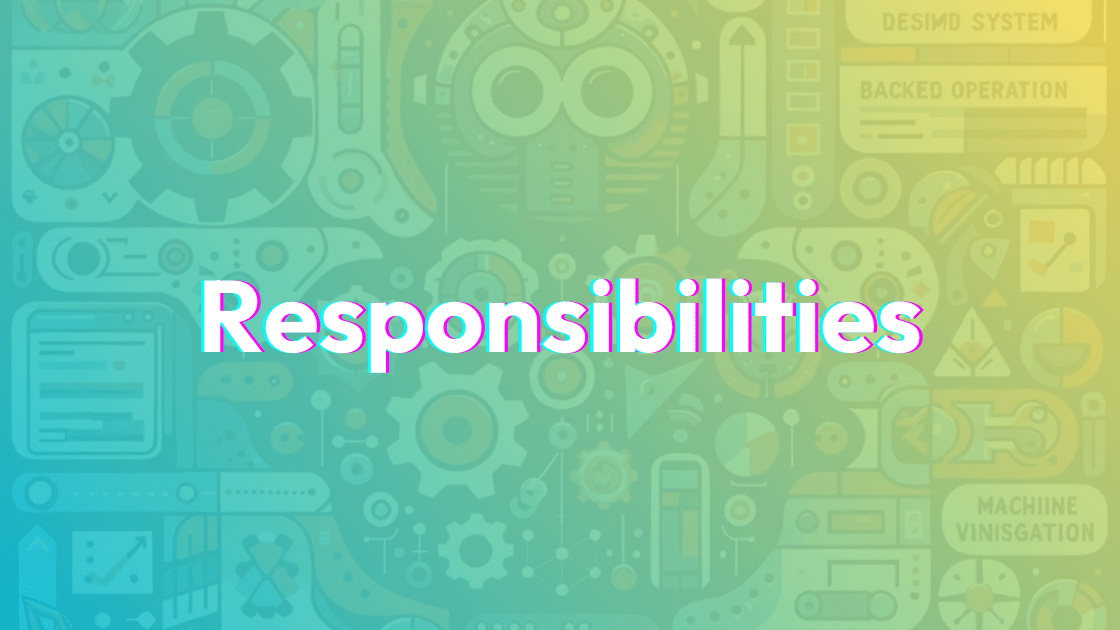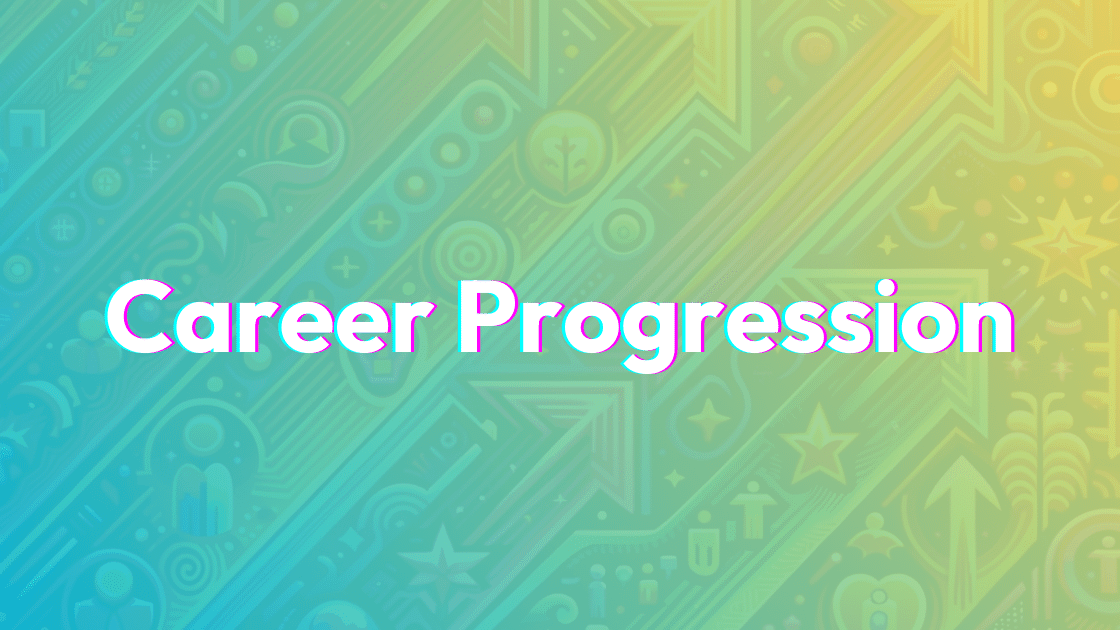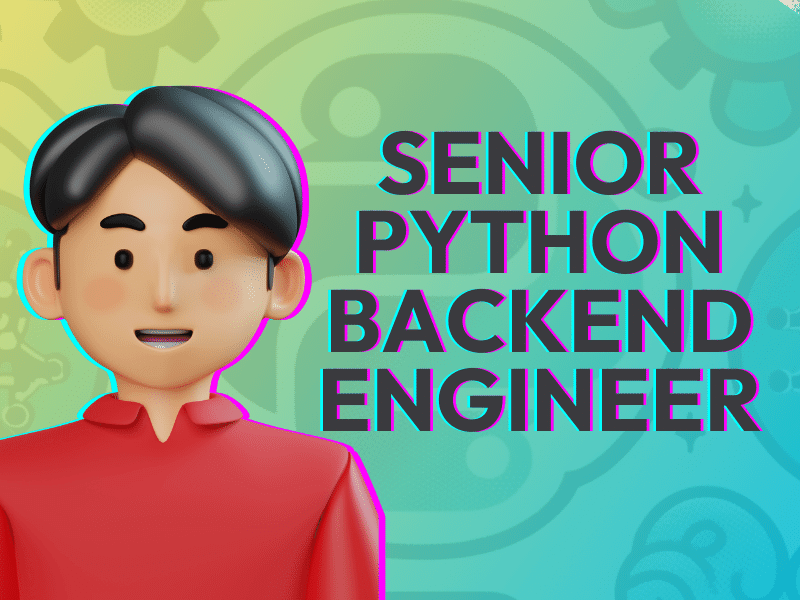Robotics Full-stack Engineer in Japan: What You Need to Know
If there is one thing Japan is famous for, it is Anime.
If there are two things Japan is famous for, it is Anime and Video Games.
If there are three things Japan is famous for, it is Anime, Video Games, and Sushi.
Robots definitely make the top 5.
I spoke to Ari (Arjab Dhakal), the robotics recruiter, about a Robotics Perception Engineer position previously, so this week I asked Ari about another position in robotics—the Full-stack Robotics Engineer.
Ari was kind enough to share all of the insights to help you get a job as a Full-Stack Robotics Engineer in Japan.
He went over what it is, the responsibilities, a day in the lifestyle breakdown, the requirements from his clients, and tips to help you land a Full-stack Robotics role.
There’s a lot to cover, so let’s get started.
What It Is
As a Full-Stack Robotics Engineer in Japan, you use front-end and back-end technologies to help humans operate robots seamlessly.
For the position with Ari’s client, there's an emphasis on front-end tools such as React, JavaScript, and TypeScript. You will also need flexibility in back-end knowledge and experience in languages like Java, Go, Python, and C++.
Interestingly, candidates aren't necessarily required to have a background in the robotics industry. Experience in fields like health tech or autonomous vehicles can be equally valuable because of the overlapping skill sets. This flexibility opens doors for professionals from various sectors to consider a career in robotics.
The role demands a good understanding of Human-Computer Interaction (HCI) and Human-Machine Interaction (HMI), ensuring smooth and intuitive interaction between users and robotic systems.
Responsibilities
You'll be developing user-facing applications for machine operators, which include visualizing and monitoring robotics systems as well as defining tasks. Ensuring the technical feasibility of UI/UX designs and the reliability of user applications is also a key part of the role.
Beyond this, you will be involved in networking, troubleshooting, and maintaining continuous integration and continuous deployment (CI/CD) pipelines.
Here is a quick list of your responsibilities:
Developing User-Facing Applications: Creating applications that enable machine operators to visualize and monitor robotics systems.
UI/UX Technical Feasibility: Ensuring that the design and function of the user interface are both practical and reliable.
Backend Development: Collaborating with robotics teams for the backend development of the application, facilitating the integration of the HMI with other systems.
Networking and Troubleshooting: Handling the performance and troubleshooting aspects of deployed systems.
CI/CD Pipeline Maintenance: Developing and maintaining continuous integration and continuous deployment pipelines for team use.
Now, let's break down what you will actually be doing everyday:
Day-to-Day
Your daily activities will involve coding (about 60% of the time), collaborating with teams, and working on specifications and requirements (around 30%). You will also need to stay up to date with the latest trends in robotics (making up 10% of your time).
Full-stack engineers serve as mediators and active developers, often using tools like Git and Confluence for collaboration.
An essential aspect is understanding and managing database scalability, which is crucial for applications used in large-scale operations, like managing fleets of bulldozers or cranes.
Here’s how your day would look:
Morning Check-In: Start with a team meeting or a stand-up to align on daily goals, discuss any blockers, and prioritize tasks. This is also a time to update the team on your progress.
Coding and Development: The bulk of the day is dedicated to hands-on coding. This involves developing and refining both front-end and back-end aspects of the robotic systems. You might be creating user interfaces, integrating backend services, or coding new features.
Collaboration and Coordination: Regular interactions with other team members, such as the backend, frontend, and robotics teams, are essential. This could include brainstorming sessions, reviewing code, or discussing integration strategies. Utilizing tools like Git for version control and Confluence for project management is a key part of this collaboration.
Lunch and Breaks: Taking breaks, including a lunch break, is crucial for maintaining productivity and creativity.
Review and Testing: Towards the end of the day, the focus shifts to reviewing the code written, testing new features, and ensuring everything integrates seamlessly. This might involve setting up or monitoring automated tests, debugging, or deploying updates.
Learning and Research: Depending on the day, some time may also be allocated for staying updated with the latest technologies, researching new tools or methods, and exploring innovative solutions to enhance robotics systems.
Documentation: Lastly, updating documentation to reflect changes or new additions to the system is an ongoing task. This ensures that everyone on the team can understand and follow the development process.
What are the requirements to work as a Robotics Full-stack Engineer?
Requirements
Here are example requirements that line up with the client requests that Ari gets.
A Bachelor’s degree in Computer Science or a related field.
At least 2 years of experience in software engineering.
Proficiency in JavaScript and front-end frameworks, especially React.
Experience in setting up and scaling databases.
Strong understanding of software versioning and Git.
English proficiency.
Bonus Points
Experience in the robotics industry.
Familiarity with Linux, Docker, Agile, and Scrum methodologies.
Japanese language proficiency.
Out of all of the requirements, here are the skills that Ari said you should focus on the most.
5 Skills That Will Make You Stand Out
1. Robotics Experience
Why It Matters:
Familiarity with robotics demonstrates an understanding of complex systems and the ability to work with cutting-edge technologies. This experience is invaluable in a field that often requires innovative problem-solving and adaptation to new tools and methods.
How to Build It:
Engage in projects or courses related to robotics. Tools like ROS (Robot Operating System) offer a practical way to gain hands-on experience. Participating in robotics competitions or working on personal robotics projects can also build relevant skills.
2. JavaScript and React (Front-End Skills)
Why It Matters:
Mastery of front-end technologies like JavaScript and React is crucial for developing intuitive and responsive user interfaces, which are essential in robotics for effective human-machine interaction.
How to Build It:
Build your skills through online courses, tutorials, and by creating personal projects. Contributing to open-source projects can also be a great way to gain practical experience and showcase your skills.
3. C++ and Python (Back-End Skills)
Why It Matters:
Proficiency in these languages is key for handling the computational logic of robotics systems. These skills are essential for algorithm development, data processing, and system integration.
How to Build It:
Practice by working on backend projects, either independently or through contributing to existing projects. Participating in coding challenges and working with data manipulation and algorithm development can also be beneficial.
4. Communication and Listening Skills
Why It Matters:
Effective communication ensures clear understanding between team members and clients. Listening skills are particularly important for understanding user requirements and feedback, which is crucial for user-centric design.
How to Build It:
Improve these skills through active participation in team meetings, presenting your ideas, and engaging in feedback sessions. Practice active listening in your daily interactions and consider taking communication workshops or courses.
5. Scrum/Agile Knowledge
Why It Matters:
Understanding Scrum and Agile methodologies is important for managing projects efficiently, adapting to changes quickly, and ensuring continuous improvement in development processes.
How to Build It:
Gain knowledge through formal training, and certification programs, and by applying these methodologies in your current projects. Participating in Agile and Scrum workshops or working in Agile teams can provide practical experience.
What is the career path for someone passionate about Robots?
Career Progression
Starting as a full-stack engineer, you can progress to senior and principal roles, with the potential to become a Tech Lead or even CTO, thanks to the versatility offered by this path.
Entry-Level: Junior Full-Stack Robotics Engineer
Starting Point: Typically, with a degree in Computer Science or a related field and some experience in software development.
Focus: Gaining proficiency in front-end and back-end technologies, understanding basic robotics concepts, and developing collaborative skills.
Mid-Level: Full-Stack Robotics Engineer
Development: Deeper knowledge in both front-end (JavaScript, React) and back-end (Python, C++) technologies, with a growing understanding of robotics systems.
Responsibilities: Taking on more complex projects, contributing to system design, and starting to mentor junior team members.
Senior Level: Senior Full-Stack Robotics Engineer
Expertise: Mastery of full-stack development and significant experience in robotics.
Leadership: Leading project teams, making critical design and technology decisions, and mentoring less experienced engineers.
Advanced Level: Principal/Lead Full-Stack Robotics Engineer
Influence: Driving technological strategies, innovating solutions, and leading multiple projects or larger teams.
Mentorship: Becoming a key mentor and knowledge resource within the organization.
Executive Level: Technical Director or CTO
Strategic Role: Overseeing the company's technological direction, making high-level decisions, and integrating the latest technologies into company strategy.
Visionary Leadership: Inspiring innovation and setting long-term goals for the company's technological growth.
Additional Pathways
Specialization: Choosing to specialize in either front-end or back-end development or a specific aspect of robotics, can lead to becoming a subject matter expert.
Transitioning Roles: The versatility of full-stack skills allows for transitioning into different roles within tech, such as project management, system architecture, or business analysis.
Ready to apply? Here are some tips from Ari to help you get hired.
Tips for Landing the Job
Show your passion
If you're new to robotics, engage in small projects using tools like ROS to demonstrate your interest and capability in the field. Show your passion for robotics, as this can be a deciding factor.
Writing a CV
When crafting your CV for a Full-Stack Robotics Engineer position, pay attention to both content and format.
Here are 8 tips based on my conversation with Ari:
Format and Presentation: Your CV should be simple, clear, and easy to read. A well-structured format is key. Use bullet points to break down your experiences and skills, and ensure that your CV is visually appealing and logically organized.
Highlight Relevant Experience: Given the diverse requirements of the role, it's important to emphasize any experience you have that's relevant to full-stack development, especially in robotics or related fields. Include any projects where you've used JavaScript, React, or other front-end technologies, as well as your proficiency in back-end languages like Java, Python, or C++.
Project Involvement: Detail your involvement in projects, particularly those that showcase your full-stack capabilities. Include the scope of the project, your specific contributions, and the technologies you used. This demonstrates your practical application of skills in a real-world context.
Robotics or Related Experience: If you have any experience in robotics, autonomous systems, health technology, or similar fields, make sure to highlight this. Even if it's a small project or a personal initiative, it shows your interest and potential in robotics.
Skills and Technologies: List the technologies and programming languages you're proficient in. This should include both front-end and back-end technologies, as well as any relevant tools or frameworks you're familiar with.
Education and Certifications: Include your educational background, especially if you have a degree in Computer Science or a related field. Also, mention any additional certifications or courses that are relevant to the role.
Professional Summary: Start your CV with a concise professional summary that encapsulates your experience, skills, and what you bring to the role. This section should grab the attention of the recruiter and make them want to read more.
Tailor Your CV: Customize your CV for the role you're applying for. Make sure that the skills and experiences you highlight are aligned with the job description and requirements of the Full-Stack Robotics Engineer position.
Interview Tips
When gearing up for an interview for a Full-Stack Robotics Engineer position, it's crucial to be well-prepared and understand what the interviewers are looking for.
Here are Ari’s interview tips:
Initial Casual Interview: Often, the first interview is informal. Use this opportunity to discuss your experience, focusing on whether you're stronger in front-end or back-end development. Since the role leans more towards the front end, emphasize your experience with front-end technologies, particularly React and JavaScript.
Technical Skills Assessment: Be prepared for a technical evaluation, which could be either live coding or a take-home assignment. These assignments usually require a few days to complete and are designed to assess your coding skills and problem-solving approach.
Domain-Specific Questions: Expect questions about your past experiences, especially any involvement in robotics or related fields. You should be ready to discuss the challenges you faced and how you applied your skills in these scenarios. This is particularly important if you have prior experience in robotics, as it will help you stand out.
Show Your Passion for Robotics: Throughout the interview process, it's vital to demonstrate your genuine interest in robotics. Even if you lack professional experience in robotics, showing that you have taken the initiative to learn and engage in projects related to the field can be very beneficial.
Communication Skills: Emphasize your communication and listening skills. Discuss how you have effectively collaborated with teams, managed client requirements, or interpreted user feedback. These skills are crucial for understanding and implementing user and client needs.
Scrum/Agile Methodologies: If you have experience with Agile and Scrum methodologies, highlight this. Discuss how you've been involved in continuous integration and continuous deployment (CI/CD) processes, and how you've contributed to iterative development in your previous roles.
Discussion on Technologies: Be ready to talk about your experience with Git, database scaling, and other relevant technologies. Demonstrate your understanding of these tools and how they're applied in a full-stack development environment.
Team Fit and Culture Fit: The final stages of the interview process may focus on how well you fit with the team and the company culture. Be yourself and let your personality shine through. Show that you're a team player who can integrate well into their environment.
Follow-up Questions: Prepare some thoughtful questions about the company, team, or specific aspects of the role. This shows your interest in the position and helps you gauge if the company is the right fit for you.
Now let’s go over some of the questions that Ari gets about working in Japan’s robotics industry.
FAQ
1. What is the difference between a Full-Stack Robotics Engineer and a Robotics Software Engineer?
Answer: A Full-Stack Robotics Engineer is involved in both front-end and back-end development of software systems for robotics. This includes creating user interfaces and handling server-side logic. In contrast, a Robotics Software Engineer typically focuses on developing and programming the robotics system itself, which might include algorithms for movement, perception, and decision-making, without necessarily working on the user interface or full-stack development.
2. How does a Full-Stack Robotics Engineer role differ from a regular Full-Stack Developer?
Answer: While both roles involve working on both the front-end and back-end, the Full-Stack Robotics Engineer's work is specifically tailored to robotics applications. This includes unique challenges like interfacing with robotic hardware, understanding robotics-specific user requirements, and potentially dealing with real-time data processing. A regular Full-Stack Developer typically works on more general software applications, without the specialized focus on robotics.
3. Is a Full-Stack Robotics Engineer the same as a Mechatronics Engineer?
Answer: No, these are different roles. A Mechatronics Engineer typically deals with the design and engineering of mechanical systems that are controlled by electronics and computer systems. They are more involved in the hardware aspect of robotics. In contrast, a Full-Stack Robotics Engineer focuses on the software development side, building applications that interact with these mechanical systems.
4. Do I need a background in robotics to become a Full-Stack Robotics Engineer?
Answer: While a background in robotics is beneficial, it is not always necessary. Experience in related fields such as autonomous vehicles, health technology, or any experience with complex system integration can also be relevant. What's crucial is a strong foundation in full-stack development and a willingness to learn about robotics.
5. What kind of programming languages should I know for a Full-Stack Robotics Engineer position?
Answer: You should be proficient in front-end technologies like JavaScript and frameworks such as React. For the back end, familiarity with languages such as Java, Python, C++, and Go is advantageous. Additionally, understanding database management and scalability is important.
6. Can a Full-Stack Web Developer transition into a Full-Stack Robotics Engineer role?
Answer: Yes, it's possible. A Full-Stack Web Developer already has the necessary skills in front-end and back-end development. To transition into robotics, they would need to gain knowledge in robotics-specific software, possibly through additional training or self-study, and get familiar with how software interfaces with robotic hardware.
By addressing these frequently asked questions, potential candidates and those interested in the field can better understand the nuances of the Full-Stack Robotics Engineer role and how it differs from other similar positions.
7. How do I get a job as a Full-Stack Robotics Engineer in Japan?
Answer: Message us using this link to find out what positions are open in Tokyo!





























